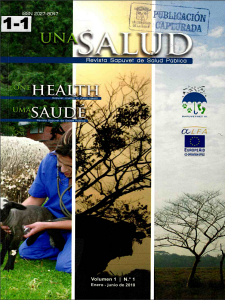Abstract
Giardia is a ubiquitous parasite; a protozoan with the ability to infect most species of vertebrates, including domestic animals and humans. In spite of being the most common enteric parasite in developing countries, there are still many doubts regarding its zoonotic potential, making it a public health issue particularly important for immunocompromised populations. This study is an approach to estimate the frequency of infection of Giardia spp. in cats and dogs from the District of Évora. During the course of this study, stool samples were collected from 131 dogs and 21 cats. From November 2007 through July 2008, veterinary hospitals and shelters provided these samples. In total, 82 dogs and 19 cats belonged to clients of the veterinary hospitals, while 49 dogs and 2 cats were shelter animals. The stool samples were collected during 3 consecutive days. The method used to detect the presence of Giardia was the Modified Faust. The animals considered positive had at least 1 sub-sample positive. Of the 152 samples tested, 34 of 131 dogs (26.0%) and 2 of 21 cats (9.5%) tested positive for Giardia spp. The parasite was not detected in any of the cats belonging to clients of the veterinary hospitals although both shelter cats showed positive results. As for dogs, 30 shelter animals were infected (61.2%), compared to 4 from the veterinary hospitals (4.9%). This study shows a much higher frequency of infection in shelter animals compared to animals from veterinary hospitals. Overcrowding, stress, on-existent proper de-worming protocol, and less than ideal hygiene practices are all factors that contribute to an animal population more susceptible to parasites such as Giardia spp. These factors are common in animal shelters. Due to the zoonotic potential of this parasite, people who adopt animals from shelters should be warned that such animals represent a higher risk in terms of infection with Giardia spp.Downloads
Download data is not yet available.



